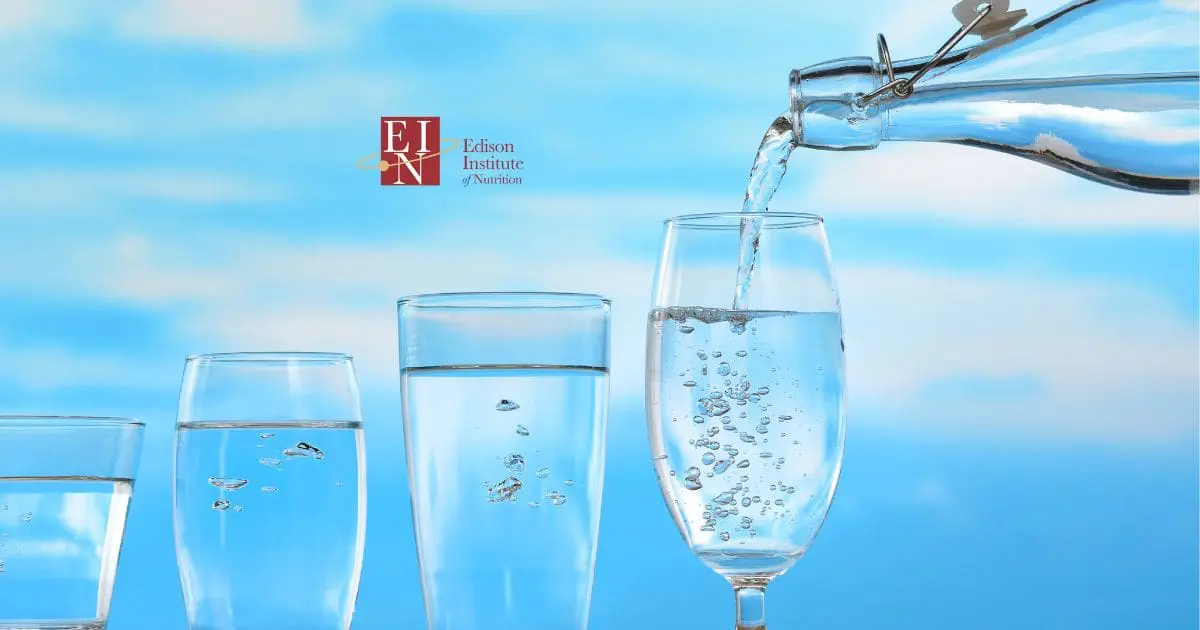
Clean Water
Every day that we live on planet Earth, our activities add more and more pollution to the world’s water that sustains life, the air we breathe, and the soil where our food is grown. The challenge to obtain pure, healthy, and consistently safe water looms larger every day.
The water you use and consume, and, the air you breathe, are the two most important nutrients, affecting your health and quality of life. Your next priority is the quality of the food you eat. Water makes up 60 – 70% of the human body and regulates every bodily function. You must take the quality of the water you use seriously.
The average Canadian uses 75 to 100 gallons (400 litres) of water every day. Seventy-five per cent of our daily water usage occurs in the bathroom. The 400 litre total includes showers, baths, toilet flushes, washing dishes, laundry, drinking, and cooking. Out of the 400 litres used, only 1 – 2 litres of water are actually consumed and end up in your stomach.
Chlorine
Everyone is aware of the chemical, chlorine, in our tap water. You can smell it. Chlorine is a cheap and very effective chemical. It is used to kill water borne viruses and bacteria in the water, from Lake Ontario, the source of tap water for the Greater Toronto Area. By law, all municipal tap water, whether lake or well water, must be treated with chlorine. The owners of private wells have the responsibility of testing their well water and taking the appropriate action.
The health of industrialized nations is very dependent on chlorine. Many third world countries have inadequate disinfection of their water supplies. Large numbers of deaths, especially of young children, are a result of many water borne diseases in these countries.
The unpleasant taste and smell of chlorine, in tap water, drives a lot of people to purchase bottled water. Your taste buds are giving you good information. Chlorine is your best friend outside your home. However, chlorine is your enemy inside your home and inside your lungs, stomach, and on your skin. A molecule of chlorine kills any living cell it contacts.
Chemicals and toxins can undermine your immune system and health, in three ways. These chemicals and toxins:
- Can be inhaled into your lungs,
- Can be ingested into your stomach
- Can be absorbed through skin, your largest organ
Once inside your body, trace chemicals tend to be stored in your fat cells.
During your morning shower, you inhale large amounts of chlorine, as a gas into your lungs. This chlorine exposure is many times greater, than the chlorine ingested, when drinking eight glasses of tap water every day. Bathing in chlorinated water assaults your body through the inhaled steam and the chlorine absorbed, through the skin.
Studies in Belgium (2003) indicated that children who swim in public swimming pools are more likely to suffer from asthma, because chlorine irritates the lining of the lungs. The severe breakdown of the lining allows pollens, dander, smoke, and other irritants to cross the barrier and set off an asthma attack.
Chlorine also breaks out as a gas from the dishwasher, your washing machine and dryer, and toilet bowls. The chlorine ends up in the air you breathe.
Trihalomethanes (THMs)
Chlorine reacts with organic matter in lakes, rivers, and wells. The reaction creates cancer causing by-products, called trihalomethanes (THMs). An American national bladder cancer study (1991) indicated a probable link between drinking chlorinated water, with its THMs, and cancer of the bladder, rectum, and colon. A California study (1998) of over 5,000 women, linked THM exposure, in their drinking water, to a potential increased risk of miscarriage, in their first trimester. A study in Norway (1999) of over 141,000 newborns, suggested chlorinated water, with its THMs, had mutation causing or carcinogenic effects, resulting in more birth defects.
From a health point of view, chlorine should be removed from your personal use water and your home environment. Solutions to remove chlorine includes: a whole home water filter system, a shower filter, or a bath water filter. Drinking and cooking water solutions for chlorine removal must include carbon filtration. However, other problems, in addition to chlorine and THMs, make the drinking and cooking water solution more challenging.
Contaminants
The Greater Toronto area sources its tap water from Lake Ontario. Though chlorine is used to kill water borne viruses and bacteria from the lake, many other problems come with the lake water. Tap water can contain trace quantities of the following health undermining contaminants:
- Parasites, not killed by chlorine
- Industrial chemicals
- Heavy metals
- Personal care
- Household cleaning products
- Pharmaceutical drugs, consumed and eventually excreted
- Trace aluminum, from the water treatment process
- Fluoride, added by the Water Department
Fluoride
Trace chemicals, in drinking water, tend to be stored in our fat cells. Fluoride tends to be stored in our bones. Studies on fluoride, a water product of aluminum and used as a rat poison, show serious health consequences. Fluoride has been linked to mottling (corrosion) of tooth enamel and brittle bones. A New Hampshire, USA study (2001) showed that 400,000 children exposed to fluoridated drinking water had elevated levels of lead, in their blood. Fluoride enhances the transport of lead into the brain. Increased behaviour problems develop due to the effects of lead on brain chemistry. The two effective ways to remove fluoride from tap water are distillation or reverse osmosis. Carbon filters do not remove fluoride.
Frank G. Hein
Healthy Body Now
Clean Water! The Secret to Healthy Living: Part 2 Filtering Devices and Options
Clean Water! The Secret to Healthy Living: Part 3 Clean Water Solutions
Earn a diploma in holistic nutrition. EIN strives to provide you with the knowledge to live well and stay healthy. We are an internationally recognized school offering online nutrition training. If you’d like to learn more about any of our programs, call us today at or contact us online.
